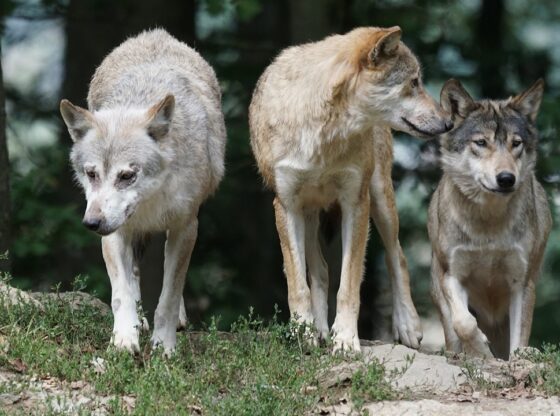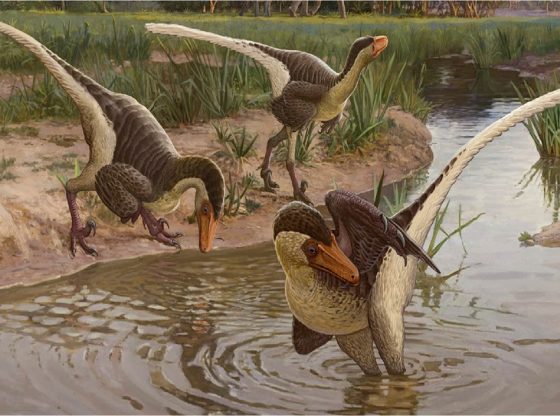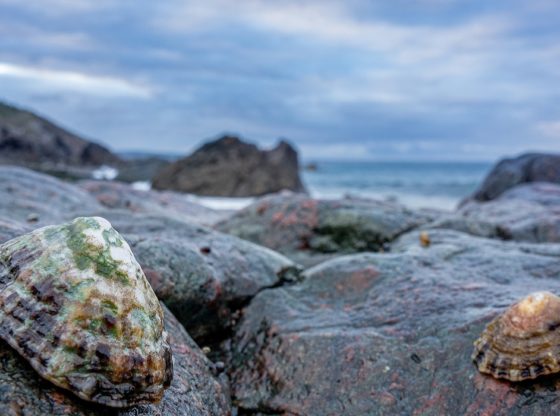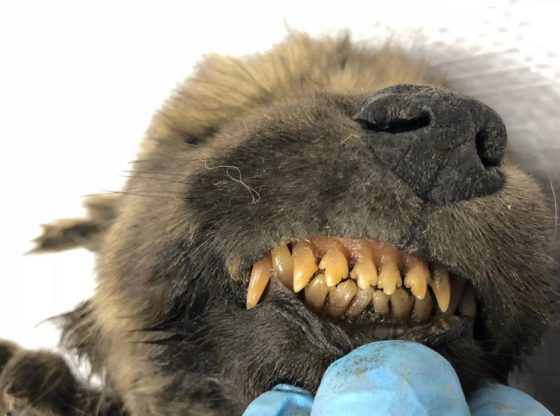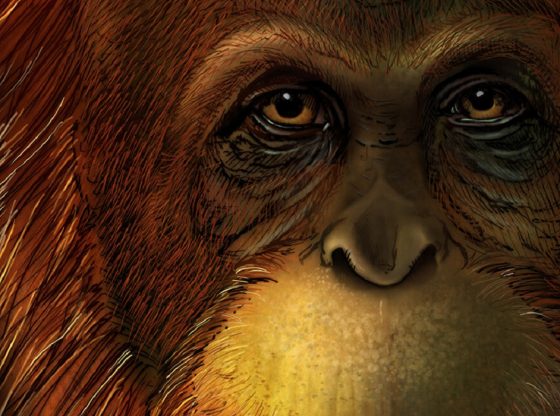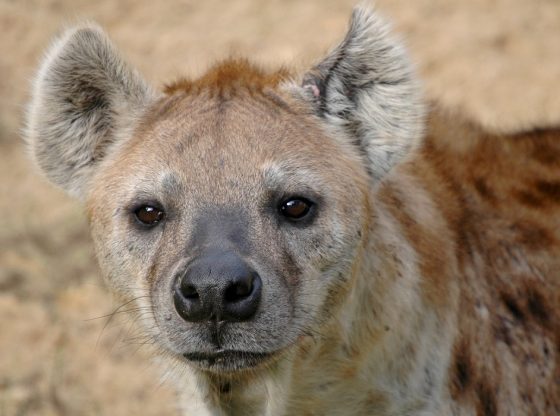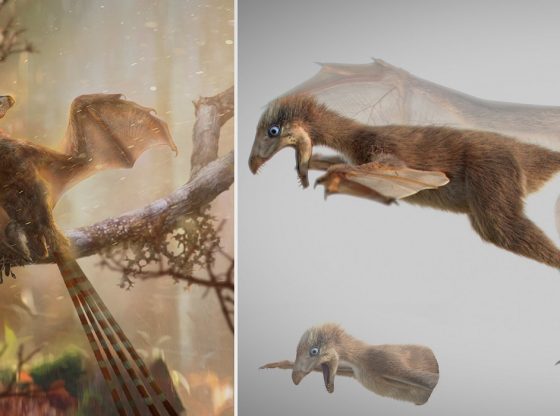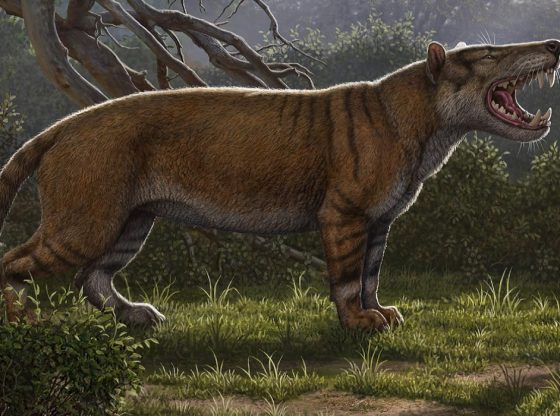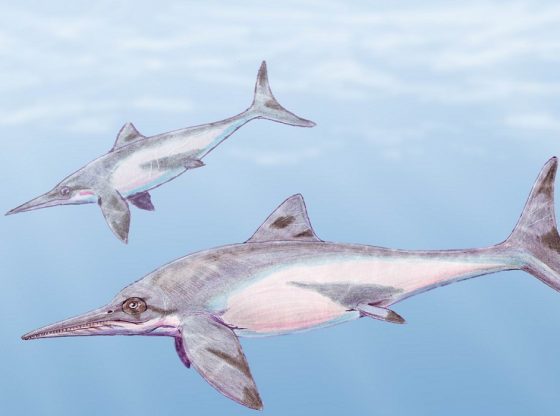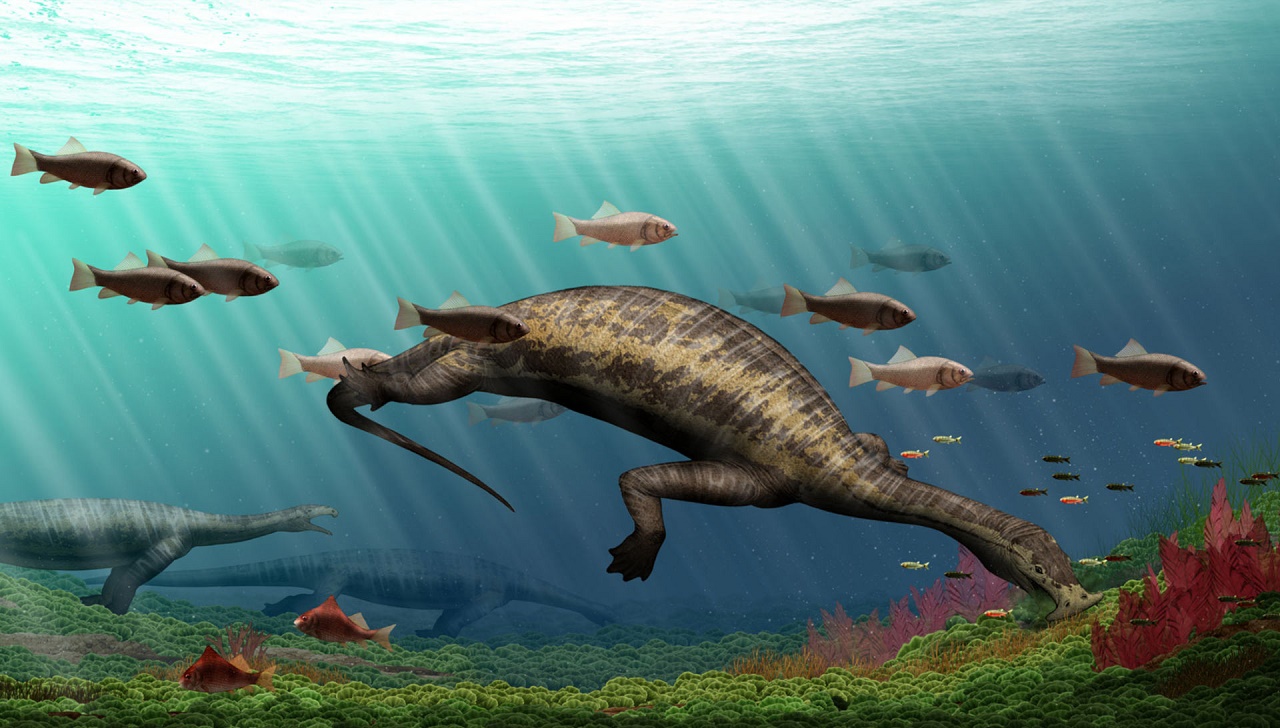
This animal lived 242 million years ago and it looks like nothing else. It is a three meter long crocodile-like aquatic reptile with a mouth that looked like a vacuum cleaner nozzle.
The species’ name in latin, Atopodentatus Unicus, loosely translated means “unique strangely toothed”. This three-meter long aquatic reptile lived 242 million years ago in what is now southern China. As far as science know, it is the first aquatic and herbivorous reptile that ever lived on Earth.
Previously, scientists believed that the Unicus Atopodentatus had a beak-like mouth. A downturned snout that was used to stir up and eat tiny invertebrate animals in the mud of the sea floor by sucking in water and then filtering it out through needle-like teeth. But this hypothesis was incorrect according to the American and Chinese researchers behind a newly published study in the journal Science Advances.
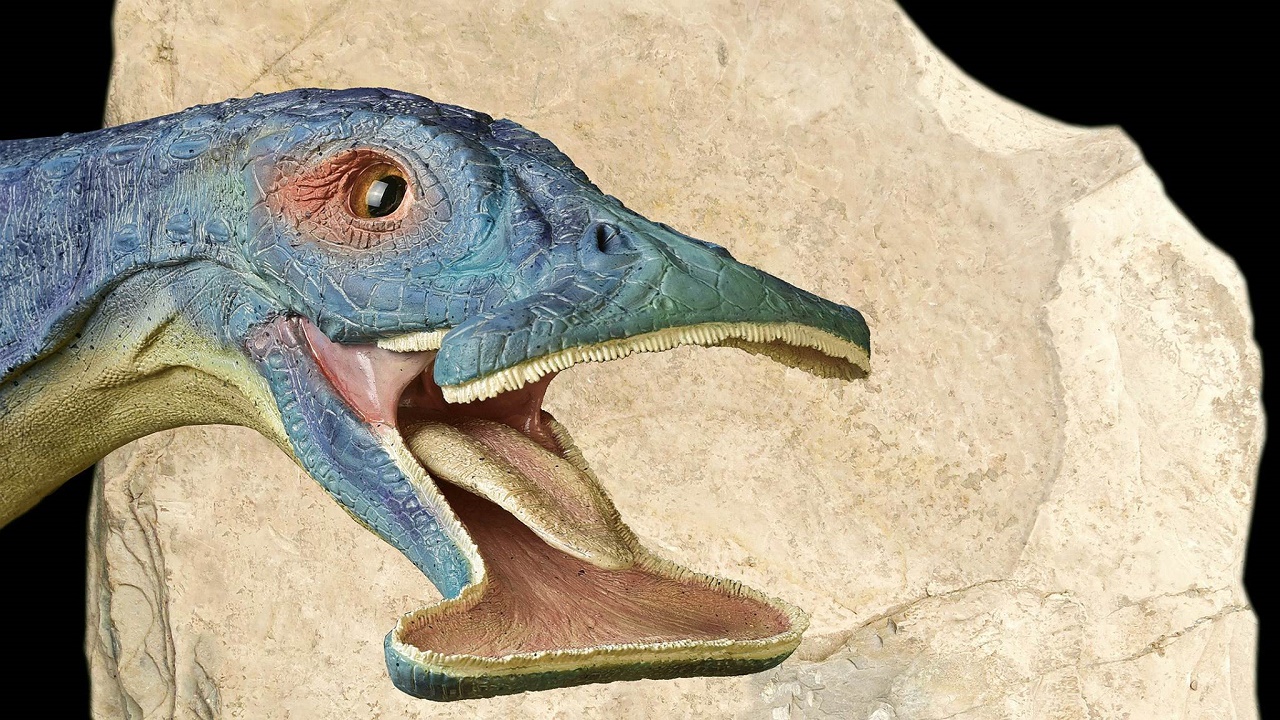
The animal instead had, according to recent studies of fossils, a horizontal and elongated jaw. Based on two new and mostly intact skulls, an international team of researchers was able to more accurately describe its face, shifting the snout into a hammerhead jaw. This jaw was filled with lots of teeth in various sizes. These teeth were adapted to life as a herbivore in the water. Some teeth were probably used to scrape up food from the bottom and others to sieve food.
The animal lived shortly after the Permian–Triassic extinction event, a mass extinction that occurred 252 million years ago. It is the largest mass death of species in the planet’s history with about 90 percent of all life on our planet wiped out. The oceans were acidified and life must have been difficult.
Life began spiraling back, but there are very few fossils from the period. Then suddenly we see an explosion of a lot of different species of animals, especially aquatic reptiles. Scientists are fairly sure that these large aquatic reptiles, some of them were several meters long, must have survived the great extinction event.
As it certainly looks as if the big reptiles came out of nowhere, but these and similar species must have existed in the past – it’s just that there is no evidence of its ancestors in the form of fossils. The animal is a very specialized large animal and it must have taken a long time for it to develop into what we now see in the fossils.
This period on Earth was when aquatic reptiles thrived, before dinosaurs, mammals or birds.
______________
The earliest herbivorous marine reptile and its remarkable jaw apparatus
____________________________

